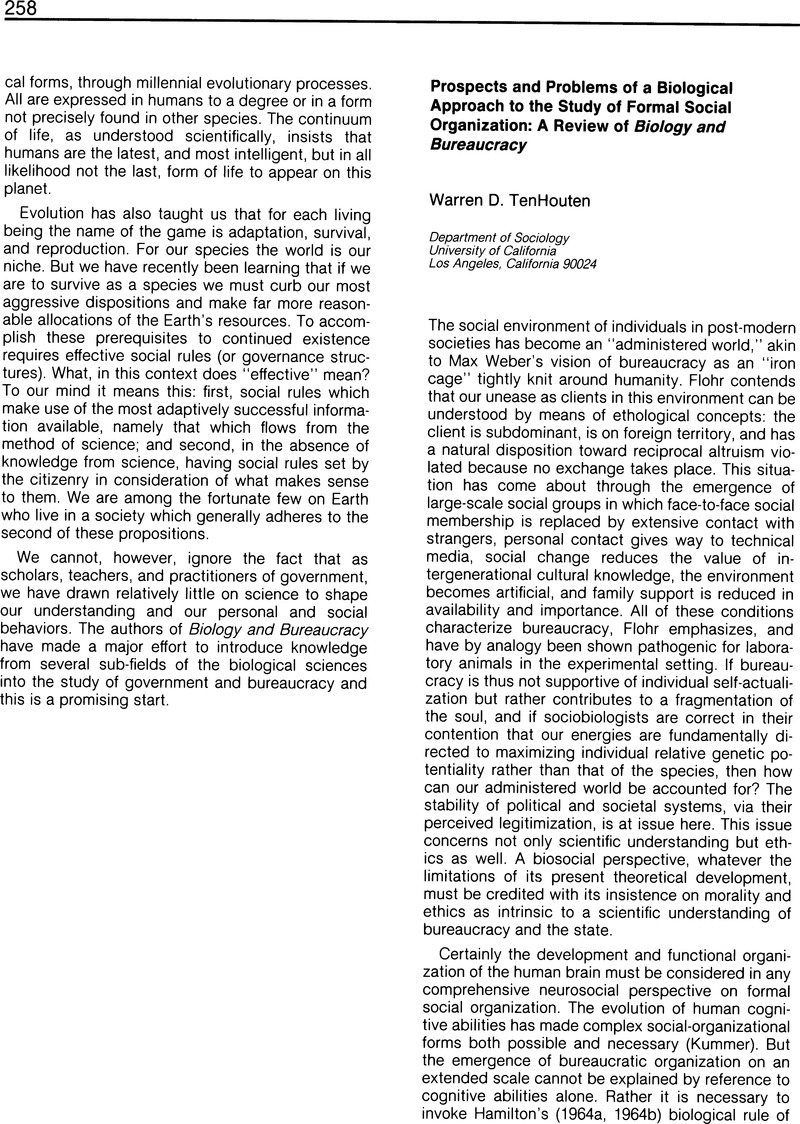No CrossRef data available.
Article contents
Prospects and Problems of a Biological Approach to the Study of Formal Social Organization: A Review of Biology and Bureaucracy
Published online by Cambridge University Press: 17 May 2016
Abstract

- Type
- Book Reviews
- Information
- Copyright
- Copyright © Association for Politics and the Life Sciences




